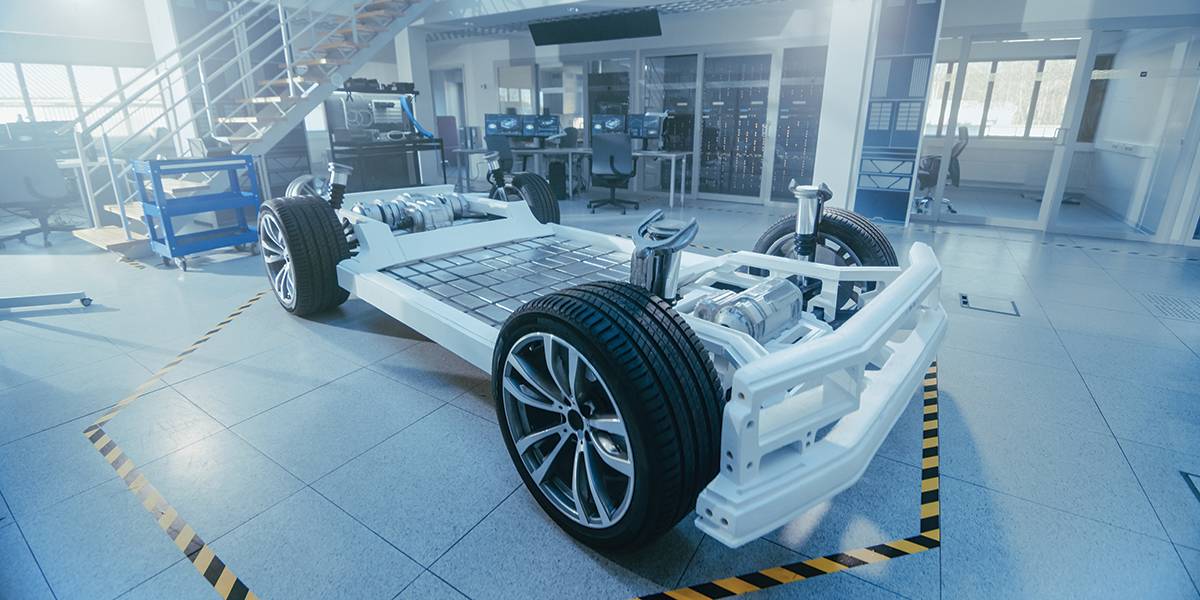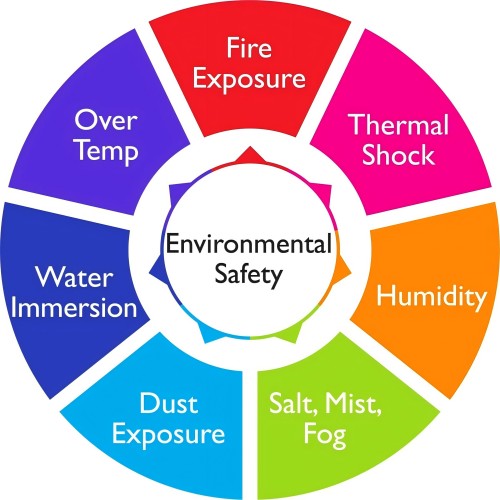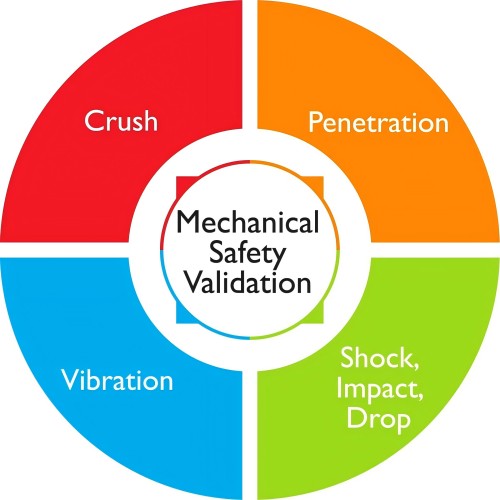Battery performance is at the heart of the electric vehicle (EV) industry, directly influencing the driving range, charging time, safety, and overall user experience of vehicles. Efficient batteries can provide a longer driving range, reduce the frequency of charging, and thus alleviate consumers' range anxiety. The development of fast-charging technology relies on battery performance, which can significantly reduce the time required for charging and enhance user convenience. Moreover, battery safety is a key factor in public acceptance of EVs; the quality of battery performance is directly related to the vehicle's safety record and brand image. The reliability and durability of batteries also determine the total cost of ownership and residual value of EVs, thereby affecting consumers' purchasing decisions. Therefore, every advancement in battery technology brings revolutionary changes to the EV industry, promoting the entire sector to develop in a more efficient, environmentally friendly, and economical direction.

In the electric vehicle (EV) industry, the performance testing of batteries is crucial as it directly affects the driving range, charging time, safety, and overall user experience of the vehicles. Below is a detailed introduction to capacity testing and cycle life testing in EV battery performance testing.
Capacity testing is used to determine the battery's ability to store electrical energy, typically measured in ampere-hours (Ah) or kilowatt-hours (kWh). This test involves fully charging the battery and then discharging it at a constant current down to a cut-off voltage, recording the total amount of electricity provided during the discharge process. Capacity testing can assess the actual available energy of the battery, ensuring that it meets the specifications required by the manufacturer. This type of testing is very important for both the initial performance evaluation of new batteries and the monitoring of battery performance as it ages.
Cycle life testing is conducted to evaluate the performance degradation of a battery after undergoing multiple charge and discharge cycles. During the test, the battery is repeatedly charged and discharged, typically under specific cycle conditions such as deep or shallow discharges. After each cycle, the battery's capacity is measured to determine the remaining percentage relative to its initial capacity. The purpose of cycle life testing is to simulate the aging process of the battery in actual use and to predict its service life. The cycle life of a battery is influenced by various factors, including the rate of charge and discharge, temperature, state of charge (SOC), and depth of discharge (DOD).
In the electric vehicle (EV) industry, environmental testing of batteries is a crucial step to ensure that batteries can operate normally under various climate and environmental conditions. Below is a detailed introduction to two key tests in EV battery environmental testing.
Temperature and humidity testing is designed to assess the performance and durability of batteries under extreme temperature and humidity conditions. These tests are essential to ensure that batteries maintain optimal performance during hot summers and cold winters. The tests typically involve exposing the batteries to high and low temperatures, as well as rapid temperature changes, to simulate the extreme conditions they may encounter in actual use. Humidity testing evaluates the battery's performance in damp environments and the risk of moisture penetration causing short circuits or performance degradation. For example, these tests assess the performance and durability of batteries under extreme temperature and humidity conditions. Batteries may be stored for a period in high-temperature (such as 55±2℃) or low-temperature (such as -20±2℃) environments, followed by a discharge test to ensure they can still function normally under extreme conditions. These tests help simulate the actual use of batteries in hot summers or cold winters.
Dust and water resistance testing (commonly referred to as IP testing) evaluates the ability of the battery enclosure to prevent the penetration of solid particles and liquids. These tests are crucial for ensuring the reliability of batteries under conditions such as dusty environments or rainy days. Dust resistance testing checks whether the battery can prevent dust ingress, while water resistance testing assesses the battery's sealing performance under various conditions of water spray, immersion, etc. For instance, an IP67 rating means the battery can withstand short periods of water immersion without damage.
When conducting these tests, international standards such as ISO 16750 and ISO 12405 are usually followed, which provide detailed guidance and requirements for battery environmental testing. Through these tests, manufacturers can ensure that their battery products remain safe and reliable under various environmental conditions.


In the safety and abuse testing of electric vehicle (EV) batteries, short circuit testing, overcharge and overdischarge testing, and mechanical shock and crush testing are crucial components that ensure the performance and safety of the batteries under extreme conditions.
Short circuit testing is designed to simulate the electrical safety performance of the battery under extreme conditions. During the test, the battery's positive and negative terminals are directly connected, causing a sudden increase in current and the generation of a large amount of heat. This test evaluates the battery's response to short circuit conditions, including whether it can safely withstand a short circuit and whether the battery's thermal management system can effectively control the temperature to prevent thermal runaway and potential fires or explosions.
Overcharge and overdischarge testing is used to assess the safety of the battery during the charging and discharging processes. Overcharge testing simulates situations where the battery is charged beyond its designed limits, while overdischarge testing simulates the battery being discharged to a voltage that is too low. These tests help to understand the battery's behavior under extreme charging conditions and whether the battery management system (BMS) can effectively prevent overcharging and overdischarging, thereby avoiding battery damage or safety incidents.
Mechanical shock and crush testing of EV batteries are essential for assessing the safety and structural integrity of batteries when subjected to sudden impacts or sustained pressures. These tests simulate the extreme physical conditions that batteries may encounter in actual use, such as vehicle collisions, drops, or crushes.
Mechanical Shock Testing: This test primarily evaluates the reliability of the battery system when subjected to sudden shocks. During the test, the battery is exposed to specific acceleration conditions that simulate the impacts a vehicle might experience when going over rough roads or in other situations. After the test, the battery system is inspected for damage, broken connections, and other issues to ensure that the battery can still maintain its functionality and safety after being subjected to a shock.
Crush Testing: Crush testing assesses the performance of the battery under sustained pressure. In the test, a certain amount of crushing force is applied to the battery to simulate the pressure the battery might experience in a vehicle collision or crush accident. The test results need to observe whether the battery undergoes deformation, leaks, catches fire, or explodes. This test helps to determine the safety limits of the battery and its endurance in actual accidents.
These tests not only contribute to enhancing the safety of the batteries but also boost consumer confidence in the safety of electric vehicles. Through these rigorous tests, battery manufacturers can ensure that their products meet industry safety standards and provide reliable performance in practical applications.
ISO 16750 is a series of standards regarding the environmental conditions and testing for electrical and electronic equipment in road vehicles. This standard covers various environmental tests, including mechanical loads, climate loads, chemical loads, and electrical loads. The purpose of ISO 16750 is to ensure that the electrical and electronic equipment inside vehicles can operate normally under the various environmental conditions encountered during vehicle use. For example, ISO 16750-2:2023 is the latest version, which details the testing requirements for automotive electronic devices under power supply conditions, ensuring that these devices can reliably work under various electrical conditions encountered during vehicle operation. This standard includes requirements for power supply voltage, slow increases and decreases in power supply voltage, power supply interruptions, transient changes in power supply voltage, short-term fluctuations in power supply voltage, overvoltage of power supply, simulation of power supply systems, and electromagnetic compatibility testing.
ISO 12405 is specifically a testing specification for lithium-ion traction battery packs and systems used in electric road vehicles. This standard includes performance testing, reliability testing, and electrical function testing for battery packs and systems. ISO 12405-4:2018 is the part of the series that pertains to performance testing, specifying test procedures to assess the basic performance characteristics of battery packs and systems in high-power or high-energy applications. These tests include the battery's capacity, power, energy, efficiency, life, and electrical functions.
The IEC 62133 standard, established by the International Electrotechnical Commission (IEC), specifically addresses the safety requirements for secondary batteries containing alkaline or non-acid electrolytes, particularly lithium-ion batteries. This standard includes safety testing for cells and batteries to ensure their safety and reliability in design, manufacturing, and use. The latest version of the IEC 62133 standard is IEC 62133-2:2017+AMD1:2021, which includes requirements and tests for the safe operation of batteries under intended use and foreseeable misuse conditions. The IEC 62133 standard includes key test items such as external short circuit testing, thermal shock testing, crush testing, overcharge testing, forced discharge testing, and vibration and mechanical shock testing. The purpose of the IEC 62133 standard is to ensure the safety of batteries under various conditions through these tests, reduce potential safety risks, and enhance consumer confidence in products containing lithium-ion batteries. This standard is adopted by numerous countries and regions worldwide and is an important basis for the safety testing and certification of lithium-ion batteries.
UN/DOT 38.3 is part of a manual of tests and criteria for the transport of dangerous goods established by the United Nations, specifically section 38.3 of part three. This standard stipulates the safety tests that lithium metal and lithium-ion batteries must pass before transportation to ensure their safety during transport. These tests include but are not limited to: altitude simulation test (T1), thermal test (T2), vibration test (T3), impact test (T4), external short circuit test (T5), crush test (T6), overcharge test (T7), and forced discharge test (T8).
The purpose of these tests is to ensure that batteries remain safe during transportation, even under adverse conditions, preventing dangerous situations such as fires or explosions. The UN/DOT 38.3 standard applies to various types of lithium batteries, including batteries transported alone, batteries transported with devices, and batteries installed in devices. Through these rigorous tests, the safety of battery products can be improved, reducing safety risks during transportation and ensuring that batteries can safely enter the global market.
NEWARE, a battery testing equipment manufacturer with 26 years of experience, provides various devices for EV battery testing and customizes battery testing solutions according to customer needs. The CE-5000 Power Cell Testing System by NEWARE offers high-precision testing for power batteries, packs, and electric vehicle manufacturers. The system supports high-speed sampling and multi-parameter testing, including energy density, cycle life, safety assessment, and environmental adaptability testing. By simulating real-world conditions and conducting DCIR tests, it ensures that batteries meet industry standards in terms of safety, durability, and power density.




The lab focuses on solid-state battery research to overcome traditional lithium batteries' safety and energy density issues, supporting environmental sustainability. It develops innovative solid-state electrolytes, refines electrode materials, and investigates ion transfer and interface stability to revolutionize battery technology.

The electric vehicle battery industry is rapidly developing, focusing on technological innovation, market competition, and sustainability. Research hotspots include solid-state batteries, new types of electrolytes, BMS optimization, and recycling technologies. The environmental adaptability, safety, and economic viability of batteries are key research areas, and the industry is expected to undergo more innovation and transformation.

We specialize in battery preparation technology research, focusing on overcoming existing energy storage challenges by innovating in electrode materials, battery chemistry, and manufacturing processes to improve performance, enhance safety, and reduce costs. Sustainability and recycling technologies for batteries are also emphasized to mitigate environmental impacts and foster the growth of green energy.